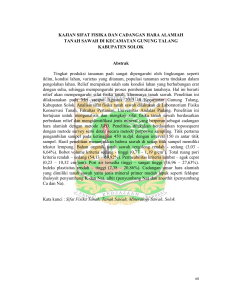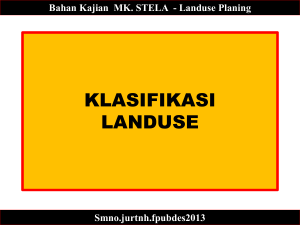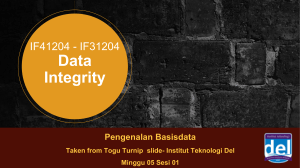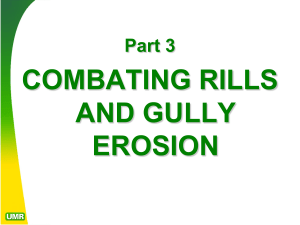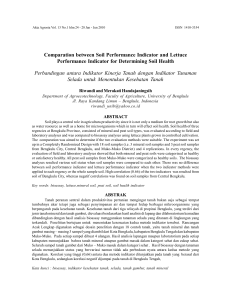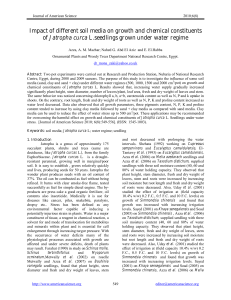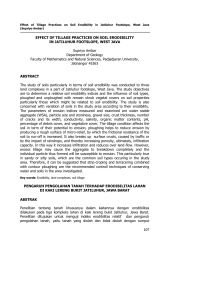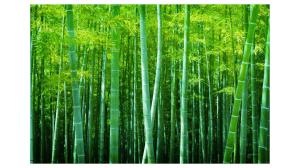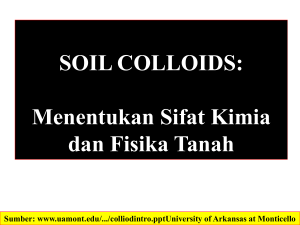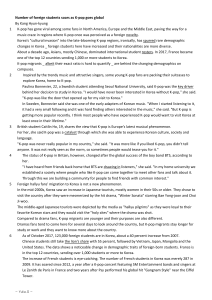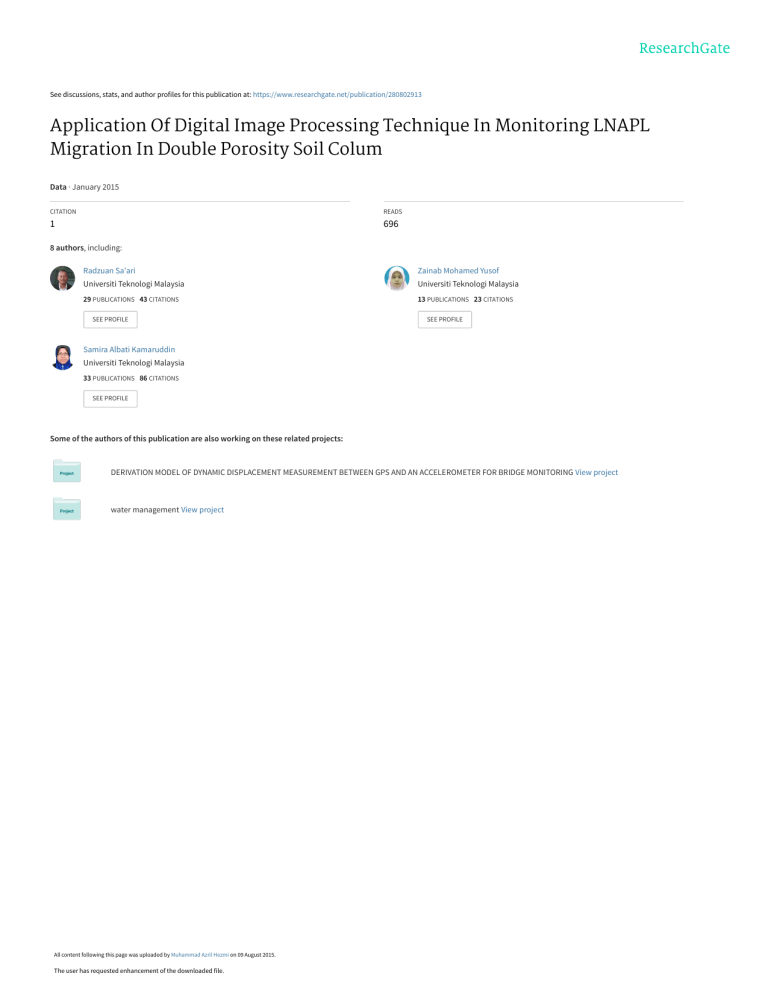
See discussions, stats, and author profiles for this publication at: https://www.researchgate.net/publication/280802913 Application Of Digital Image Processing Technique In Monitoring LNAPL Migration In Double Porosity Soil Colum Data · January 2015 CITATION READS 1 696 8 authors, including: Radzuan Sa'ari Zainab Mohamed Yusof Universiti Teknologi Malaysia Universiti Teknologi Malaysia 29 PUBLICATIONS 43 CITATIONS 13 PUBLICATIONS 23 CITATIONS SEE PROFILE SEE PROFILE Samira Albati Kamaruddin Universiti Teknologi Malaysia 33 PUBLICATIONS 86 CITATIONS SEE PROFILE Some of the authors of this publication are also working on these related projects: DERIVATION MODEL OF DYNAMIC DISPLACEMENT MEASUREMENT BETWEEN GPS AND AN ACCELEROMETER FOR BRIDGE MONITORING View project water management View project All content following this page was uploaded by Muhammad Azril Hezmi on 09 August 2015. The user has requested enhancement of the downloaded file. Jurnal Teknologi Full paper Application Of Digital Image Processing Technique In Monitoring LNAPL Migration In Double Porosity Soil Column Sa’ari, R.a, Rahman N. A.a,b*, Abdul Latif, H. N.a, Yusof Z. M.a, Ngien, S. K.d, Kamaruddin, S.Ac, Mustaffar, M.a, Hezmi M. A.a a Faculty of Civil Engineering, Universiti Teknologi Malaysia, 81310 UTM Johor Bahru, Johor Malaysia College of Engineering, Taibah University, 30002 Madinah, Kingdom of Saudi Arabia c UTM Razak School of Engineering and Advanced Technology, Universiti Teknologi Malaysia Kuala Lumpur, Jalan Semarak, 54100 Kuala Lumpur d Faculty of Civil Engineering & Earth Resources, Universiti Malaysia Pahang, Lebuhraya Tun Razak, 26300, Gambang, Kuantan, Pahang. b *Corresponding author: [email protected] Article history Abstract Received: 17 August 2014 Received in revised form: 17 November 2014 Accepted: 24 December 2014 This paper investigates the phenomenon of light non-aqueous phase liquid (LNAPL) migration in double porosity soil. Investigation on the migration of LNAPL in double porosity soil was performed on aggregated kaolin using the digital image analysis. The photographic technique was used to capture the migration of LNAPL in aggregated soil samples. The captured digital images were fed through an image processing code to convert them to the hue-saturation-intensity (HSI) format which were subsequently used to plot the 2D LNAPL migration behaviour. The results of Experiment 1 and 2 show that the LNAPL moved downward faster when the moisture content increased. Another observation was that the kaolin granules started to disintegrate at a water content of 35%. In conclusion, using image analysis technique has enabled the researchers to monitor and visualize the LNAPL migration in the double porosity soil columns based on HSI values. The contour plots of HSI intensity value has provide detailed and useful information for future research. Graphical abstract Keywords: Image analysis; NAPL experiment; monitoring; moisture content; aggregate kaolin Abstrak Kertas kerja ini menyiasat fenomena pergerakan cecair fasa tanpa warna (CFTW) melalui tanah dwi keliangan. Pemantauan pergerakan CFTW dalam tanah dwi keliangan telah dibuat ke atas sampel agregat kaolin menggunakan teknik analisis imej berdigit. Teknik fotografi digunapakai untuk merakam imej berdigit pergerakan CFTW melalui sampel agregat kaolin. Imej berdigit seterusnya diproses menggunakan atucara komputer untuk menukarkan format imej rakaman kepada format warna intensiti tepu (WIT) untuk menghasilkan plotan 2D untuk memaparkan gayalaku pergerakan CFTW. Keputusan eksperimen menunjukkan kelajuan pergerakan CFTW adalah lebih pantas seiring dengan peningkatan kadar kandungan kelembabpan dalam sampel. Agregat kaolin yang berzarah kasar juga dikesan mula hancur pada tahap kandungan air 35%. Kesimpulannya, penggunaan teknik analisis imej berdigit membolehkan pemantauan dan paparan pergerakan CFTW di dalam tanah dwi keliangan dengan mengunakan nilai WIT. Plotan kontor yang dihasilkan menggunakan nilai WIT mampu menyediakan maklumat yang lengkap dan amat berguna untuk kajian pada masa hadapan. Kata kunci: Analisis imej, eksperimen CFTW, pemantauan, kandungan kelembapan, agregate kaolin. 2015 Penerbit UTM Press. All rights reserved. 1.0 INTRODUCTION of double porosity. This concept extensively used in different fields and it can address the features depicted in Figure 1 [7]. The chemical of non-aqueous phase liquids (NAPL), are immiscible hydrocarbons in sub-surface that exhibit different behaviour and properties from those of dissolved contaminant plumes. The migration of contaminant depends on the structure of the soil. The soil that called double-porosity media is the soil that exhibit two distinct scales of porosity. Double-porosity soil composed of two distinct sub-regions with highly contrasting hydraulic properties due to different characteristic pore size. Such division of pores into macro and micro levels leads to the concept 72:3 (2015) 23–29 | www.jurnalteknologi.utm.my | eISSN 2180–3722 | 24 Sa’ari, R. et al. / Jurnal Teknologi (Sciences & Engineering) 72:3 (2015) 23–29 Aggregate Porus block Infra aggregate pore Sand grain Fissure Inter aggregate pore (a) Aggregated soil (b) Fissured porous medium Figure 1 Concept of double porosity by Koliji [7]. The objectives of the study were (i) to determine the patterns or behaviour of light non-aqueous phase liquids (LNAPLs) migration in double-porosity soil using digital image processing technique (DIPT), (ii) to differentiate the patterns of LNAPL migration in double porosity with different of moisture content of soil and (iii) to determine the moisture content when kaolin aggregate start to disintegrate. Basically, this study covers the migration of LNAPL in a 100 mm height of soil columns. The dimension of a 6 mm thick acrylic cylinder to form the soil column was 300 mm high and 94 mm diameter. In preparing the aggregated sample, 25% and 33% of water was added to dry kaolin in Experiment 1 and 2, repectively. They were mixed and compacted to form a soil column that have double porosity. Toluene was used as an LNAPL source. Toluene is a colorless, flammable, non-corrosive liquid with a benzene-like odor. It is insoluble in water and soluble in acetone, absolute alcohol, ether, chloroform, benzene, petroleum ether, glacial acetic acid, and carbon disulfide as reported by HSDB [3]. Table 1 provides the properties of toluene used in this study. The toluene was dyed red with Oil Red-O to enhance the visual observation. About 70mL of LNAPL was poured instantaneously on top surface of each agrregate sample. The DIPT was developed using some Matlab functions to monitor the LNAPL flow behaviour. Table 1 Toluene Properties [15] Properties Description For Laboratory,Research,or Manufacturing Use Trace Organic Residues Flame Ionization Detector (FID) - Sensitive Impurities (as 2-Octanol) Single Impurity Peak. Electron Capture Detector (ECD) Sensitive Impurities (as Heptachlor Epoxide) Single Peak Assay (C₆H₅CH₃) (corrected for water) Color (American Public Health Association (APHA)) <= 10 ng/mL <= 10 pg/mL >= 99.7 % <= 10 Residue after Evaporation <= 1.0 ppm Water (Coulometric) <= 0.03 % Specific Gravity Flash Point 2.0 LITERATURE REVIEW Many researchers have conducted non-destructive and nonintrusive imaging techniques for the NAPL experiments such as Kamarudin et al. [4], Kamaruddin et al. [5], Ngien [10], Ngien et al.[11] and Van Geel et al.[13]. Kamaruddin et al. [5] have presented a detailed review on previous works of NAPL flow behaviour in subsurface environments using various approaches (i.e., numerical simulation, laboratory and photographic methods). Several saturation imaging analysis techniques (SIAT) that have been extensively discussed in Osstrom et al.[12], such as the image analysis method (IAM) [9] and [13], the light reflection method (LRM) [2], the multispectral image analysis method (MIAM) [6], the light transmission method (LTM) [14] and the time-lapse fluorescent imaging (TLFI) [1]. The SIAT that were based on image processing technique was also applicable to monitor the migration of NAPL in double porosity of aggregate kaolin. Recently, Kamaruddin et al [4] Kamaruddin [5], Ngien [10] and Ngien et al. [11] have reported 1L = 0.86 Kg 4.00° C experimental and numerical analysis of NAPLs migration in double porosity subsurface systems using DIPT. In investigating the LNAPL migration through a porous medium, Kamaruddin et al. [4] have applied DIPT to determine water and LNAPL saturation. The experiment was conducted to observe the migration of Toluene and Benzene in a 2D sandy medium. As both chemicals are colourless, they were coloured with Oil Red-O to enhance the delineation of LNAPL movement in the sandy medium. Digital images at specified time interval were captured during the laboratory experiment to monitor the changes of shape and intensity of red colour of Toluene and Benzene using a Digital Single-Lens Reflex (DSLR) camera. The DIPT that consisting of some Matlab functions and commands, and visualization through Surfer were then used to determine the distribution of water and LNAPL saturation. More details discussion on digital image processing can be found in Mc Neil et al. [9] and Shicariol et al. [13]. 3.0 MATERIAL AND METHODS 25 Sa’ari, R. et al. / Jurnal Teknologi (Sciences & Engineering) 72:3 (2015) 23–29 3.2 Digital Camera Setup Figure 2 shows the flow chart of the laboratory experiment setup comprises of apparatus, soil sample and LNAPL preparation. The laboratory experiment procedures and image processing were discussed in brief in the following section. Experiment Experiment Setup Preparation of: -Apparatus -Soil Sample -LNAPL Laboratory Experiment LNAPL Migration Monitoring -Experiment 1 -Experiment 2 Digital Image Processing A digital camera was the main equipment used for image acquisition of the LNAPL migration at designated time intervals. Nikon D90 DSLR camera with a sensor size of 15.8 mm by 23.6 mm and pixel array of 3216 x 2136 pixels (12 megapixels) was used to operate at a minimum shutter speed and aperture, which fixed at 1/30 of a second and f5.6, respectively. A remote control was used to smoothly captured images without shaking the camera. The distance (L) between the camera and the sample was fixed at L=0.7 m (see Figure 3). The camera captured only front face or front part of the soil column surface, which only exposes 50% of the AOI in the camera view. To overcome this problems two mirrors were placed at 105° of angle with ofset distance (d) at d=0.2 m behind the soil column and facing to the digital camera as shown in Figure 3. The mirrors was used to reflect the image of left and right sides of the soil column that were not expose to the camera. These approaches have allowed 100% exposure of the soil column surface in a single view of an image. Figure 4 shows the physical setup of the digital camera and soil column to obtain 100% exposure of the soil column throughout the laboratory experiment. LNAPL Migration Behaviour: -Image Registration -Convert Image Format (RGB to HSI format) -Extrac HSI Value -Plot 2D LNAPL Migration Pattern Figure 2 Flow chart of the laboratory experiment for LNAPL migration 3.1 Aggregated Sample Preparation Kaolin was used as the soil sample. The properties of kaolin were tested according to BS 1377-2 for the Atterberg limits, particle density and particle size distribution (PSD). Prior to these tests, dried kaolin powder in Experiment 1 and 2 were mixed with water 25% and 33% of water content, respectively. The sample was immediately placed in a resealable plastic bag and the trapped air was carefully expelled from the plastic to keep the moisture from being evaporated. The samples were cured in a cool and dark condition place for a minimum 24 hours to maintain the condition of moisture content. Kaolin aggregate that passed 2.36 mm sieve was placed in a circular acrylic for a compaction process using a simple compression machine. The average and overall permeability of the aggregate sample were obtained by falling head permeability test. The acrylic column has been chosen for a clear visualization of LNAPL migration. As the DIPT was chosen to monitor the migration behaviour of the LNAPL movement in a column, the whole of the soil surface has been easily captured using a digital camera. This means that the LNAPL migration through the soil can be seen instantaneously at any point and time throughout the experiment. Since the soil columns were in circular shape, images that reflected from the camera and the two mirrors have been combined and corrected to produce a complete single flat area of interest (AOI). This AOI has visualized the movement and appearance of LNAPL for the entire surface of the circular column. Figure 3 Top view of experimental setup. Figure 4 Side view of the experimental setup A white paper with a pre-drawn scale grid line, as shown in Figure 5(a) was then wrapped onto the soil column. The grid line was used as a reference mark on a reference image. The reference mark was required in the image registration procedure to transform any distorted image according to the actual scale image. Once the reference image was captured, the grid line paper can be removed from the soil column as shown in Figure 5(b). 26 Sa’ari, R. et al. / Jurnal Teknologi (Sciences & Engineering) 72:3 (2015) 23–29 (a) Soil column with reference points Image Processing Digitizing control points Image registration and tranformation Selection Area of Interest (AOI) Convert RGB image to Grey i Convert RGB image to HSI image Extract Grey and HSI intensity value Save HSI value in ASCII format (b) Soil column without reference points Figure 5 The soil column with (a) and without (b) grid lines paper on the acrylic column. 3.3 Laboratory Experimental Procedure The position soil column were kept in a fix place to avoid any movement. The paper with gridlines size of 20 mm x 20 mm was covered the soil column. Once the reference image captured, the gridlines paper was removed from the soil column. Toluene was poured on top of the aggregated kaolin sample in the soil column. When the Toluene was poured, the subsequent digital images were captured at a specific time interval to record the LNAPL migration behaviour. 3.4 Digital Image Processing Generate contour plot using HSI intensity value to show the LNAPL migration behaviour Figure 6 Flow of digital image processing technique Once image registration completed, the REIVAL routine then executed on a selected AOI. The selection AOI was based on the pre-determined boundary area of interest. The AOI refers to the part of area of each image that corresponds to the migration area that contains the LNAPL. The REIVAL routine then converted that AOI into red-green-blue (RGB) and HSI image format. The RGB and HSI intensity values of each pixel were extracted and save as The digital images captured during the laboratory experiments were saved in JPEG format. A Matlab image processing routine called REIVAL was used to perform the digital image processing tasks. Figure 6 shows the flow of digital image processing task. In the beginning, the Surfer software was used to extract the image coordinates of the grid intersections through digitization process. The obtained coordinates acted as control points or reference points as one of the required parameter in REIVAL routine. This routine was developed to perform image registration process: (1) to convert image format from JPEG to HSI, (2) to extract the HSI intensity value area of interest and (3) to save the intensity value in text files using an American Standard Code for Information Interchange (ASCII) format. An affine transformation method was selected to execute the image registration process. standard ASCII format. For each image, the REIVAL routine would looped three times to extract and export the intensity values of all three AOI of the soil column (i.e., the front and the reflected Sa’ari, R. et al. / Jurnal Teknologi (Sciences & Engineering) 72:3 (2015) 23–29 sections). The Surfer software was used to plot the progress of the LNAPL migration based on the image HSI intensity values. Figure 7 shows the selected AOI with grid lines (left, middle and right sections) extracted from a selected image. The selected AOI then was combined to form a new single image as shown in Figure 8. Surfer software then read the ASCII data of HSI to generate a 2D contour plot. This will enable the reseacher to monitor progress of the LNAPL migration based on the HSI intensity values in double porosity soil column. The contour plots of HSI intensity value provide details and useful Right information to Left researcher to understand the characteristic of LNAPL migration Middle behaviour. 0 Column Depth (mm) 27 -50 -100 0 50 100 150 200 250 300 200 250 300 Circumference Depth (mm) (b) 1 minutes 0 Column Depth (mm) Figure 7 AOI (left, middle,right) before image transformation -50 -100 0 50 100 150 Circumference Depth (mm) (c) 2 minures Figure 8 AOI after image registration and transformation -50 -100 0 50 100 150 200 250 300 200 250 300 Circmference Depth (mm) (d) 3 minutes 0 Column Depth (mm) Figures 9 and 10 show the results of LNAPL migration for Experiment 1 and 2, respectively. In Experiment 1, the first image was used as a reference image when Toluene was poured uniformly on the top surface of the soil column. This pouring technique was used to ensure that the LNAPL moved in 1D migration. The pouring technique was changed in Experiment 2. The LNAPL was instantaneously poured onto the soil surface. As a result, the surface of the sample in Experiment 2 was not uniformly covered before penetrating the sample. Images for Experiment 1 were taken at one minute interval in the first three minutes, and later changed to nine minute interval. The duration for LNAPL migration from the top surface to the bottom was 38 minutes. When the LNAPL migration reached at one quarter of the test sample (i.e., after one minute) the LNAPL dispersed as can be seen in Figure 9(b). Due to fast LNAPL migration, a shorter duration of time interval was implemented for Experiment 2. The overall migration only took about 15 seconds. As can be seen in Figures 10(a) and 10(b), the LNAPL has penetrated deeper along the first 100 mm in x-axis compared to the last 100 mm. This is happen due to more inter-aggregated pores present below the 25 mm depth at the left side of that image where an irregular compression may occur in the entire soil sample. Also, the uneven pouring would influence the way of LNAPL penetration as seen in Figure 10(a). -50 -100 0 50 100 150 Circumference Depth (mm) (e) 9 minutes 0 Column Depth (mm) 4.0 RESULT AND DISCUSSION Column Depth (mm) 0 -50 -100 0 0 50 100 150 200 250 300 Column Depth (mm) Circumference Depth (mm) (f) 38 minutes -50 Figure 9 (a), (b), (c), (d), (e) and (f) show HSI plots of vertical downward LNAPL migration in soil column for Experiment 1 with moisture content of 25%. -100 0 50 100 150 Circumference Depth (mm) (a) 0 minutes 200 250 300 28 Sa’ari, R. et al. / Jurnal Teknologi (Sciences & Engineering) 72:3 (2015) 23–29 of migration for Experiment 1 is lower than Experiment 2. From the results, the pouring technique, consistency of compaction and water content have greatly influence the LNAPL migration in double porosity agrregated kaolin. Column Depth(mm) 0 -50 0 -100 0 50 100 150 200 250 300 Circumference Depth (mm) (a) 0 to 0.5 seconds Column Depth (mm) -20 Column Depth (mm) 0 -50 -40 -60 -80 -100 0 50 100 150 200 250 300 Circumference Depth (mm) (b) 5 seconds -100 0 0 Column Depth (mm) (a) 10 20 Time (minutes) 30 40 Measured values of cumulative LNAPL migration depth as a function of time for Experiment 1 -50 0 -100 0 50 100 150 200 250 300 Circumference Depth (mm) -20 10 seconds Column Depth (mm) (c) Column Depth (mm) 0 -50 -40 -60 -80 -100 0 50 100 150 200 250 300 Circumference Depth (mm) -100 0 (d) 15 seconds Figure 10 (a), (b), (c) and (d) show HSI plots of vertical downward LNAPL migration in soil column for Experiment 2 with moisture content of 33%. Figure 11 shows the rate of migration for Experiment 1 and 2. From Figure 11(a), it can be seen that the LNAPL migration in Experiment 1 penetrates within 100 seconds as the gradient of the graph lines is the steepest within that duration. After the 100 seconds, the curve of the graph lines began to incline horizontally at the gradual pace until the end of the experiments, depicting a gradual slowing of the downward LNAPL migration. Figure 11(b) shows that the LNAPL migration in Experiment 2 gradually reached a horizontal line after 4 seconds. The observation has shown that the LNAPL was quickly migrated through the test sample in Experiment 2 due to the higher percentage of water content in the soil sample and the uneven compaction, which produce a looser sample. The average LNAPL migration rate for Experiment 1 and 2 are 0.04 mm/s and 1.668 mm/s, respectively. Based on the result, it can conclude that the rate (b) 0.1 0.2 Time (minutes) 0.3 Measured values of cumulative LNAPL migration depth as a function of time for Experiment 2 Figure 11 LNAPL migration depth as function of time for Experiment 1 (a) and Experiment 2 (b). Experiment 1 and 2 were compared with the results obtained from the works of Ngien [10], who conducted similar laboratory test but using different moisture contents which is 30% of moisture content. The migration of LNAPL in 30% moisture content takes in six minutes and can be considered as one-dimensionally downward, which forming a horizontal line at the front of soil column. The LNAPL migrated very quick within the first 10 seconds and after 10 seconds, which shows a gradual decrease of rate during the LNAPL downward migration. The calculated average LNAPL migration rate was 0.278 mm/s. The scenario of migration of LNAPL in 30% of soil sample was similar to Experiment 1 that has 25% of water content. However, they have 29 Sa’ari, R. et al. / Jurnal Teknologi (Sciences & Engineering) 72:3 (2015) 23–29 different duration to reach the bottom of soil sample. From the observation, the inter-aggregate pores of soil samples for 33% moisture content is quite large compared with 25%. This condition may cause the LNAPL moved downward faster when the moisture content increased. This is because movement of LNAPL is influenced by several factors and one of them is capillary presure. Based on explainantion by Ngien et al. [11], pores with larger size reduces the capillary presure that LNAPL has to overcome to enter those pores and thus move through the soil. In the experiments presenred here, 33% moisture content resulted in larger interaggregate pores compared to 25% moisture content. It therefore stands to reason that comparing double-porosity samples with higher and lower water content, the LNAPL will take a shorter time to reach the bottom in the sample with higher water content due to the fact that higher content results in larger inter-aggregate pores. However, result from experiment showed that at 35% moisture content, the kaolin aggregate starts to disintegrate. This means that, the limit for double porosity condition for the kaolin is 35% of water content. 5.0 CONCLUSION A laboratory experiment on LNAPL migration in double porosity, aggregated soil was conducted. The digital image processing technique using Matlab routine and Surfer software was applied to show the LNAPL migration behaviour in the soil column physical model. The experiment was also successfully differentiate the patterns of LNAPL at different moisture content which are 25% and 33% were presented and determined the limit of moisture content for the aggregated kaolin starts to disintegrat. The results of the laboratory experiments were determined through the observation of LNAPL that percolate into the test sample of double porosity and comparison made with previous similar studies by Ngien [10]. From the observation, the rate of migration of LNAPL was increased when the moisture content increased. It is because the moisture content influences the migration of the NAPL. However, the used kaolin is limited to 35% of moisture content. With this moisture content, it was failed to produce the aggregated kaolin and was difficult to compact during the compaction works. Once the moisture content limit is exceeded, aggregation of the kaolin will be impossible and even if some semblance of the kaolin granules were formed, it will be extremely difficult to execute proper compaction of the soil samples to the desired height. In conclusion, the used image processing has enable the reseachers to monitor and visualize the LNAPL migration based on the HSI intensity values in double porosity soil column. The contour plots of HSI intensity value has provide detailed and useful information to researcher to understand the characteristic of LNAPL migration behaviour. Acknowledgement The authors would like to thanks their respective universities, Hydraulics and Hydrology Laboratory, and Surveying Unit, Faculty of Civil Engineering, Universiti Teknologi Malaysia for the kind assistance lent to this research. This research was funded by Research Management Centre (RMC), Universiti Teknologi Malaysia under research university grant (Q.J130000.7122.00H69). References [1] [2] [3] [4] [5] [6] [7] [8] [9] [10] [11] [12] [13] [14] [15] View publication stats Bridge, J.W., Banwart, S.A. and Heathwaite A.L. 2006. Non-invasive quantitative measurement of colloid transport in mesoscale porous media using time lapse fluorescence imaging. Environment Science Technology., 40: 5930–5936. Darnault, C.J.G, Throop, J.A., Dicarlo, D.A., Rimmer, A., Steenhuis, T.S. and Parianges, J.Y. 1998. Measurement of fluid contents by light transmission in three-phase oil-water-air systems in sand. Water Resources Research. 37: 1859–1868. HSDB. 1991. Haazardous Substances Data Bank. National Library of Medicene, National Toxicology Information Program. Bethesda, MD. Kamaruddin, S.A., Sulaiman, W.N.A., Rahman, N.A., Zakaria, M.P., Mustaffar, M. and Sa'ari, R. 2011. Two-dimensional laboratory investigation of light non-aqueous phase liquid migration in subsurface environment. In Contemporary Environmental Quality Management in Malaysia and Selected Countries. Serdang: Universiti Putra Malaysia Press. Kamaruddin, S.A., Sulaiman, W.N.A., Rahman, N.A., Zakaria, M.P., Mustaffar, M., Sa’ari, R. 2011. A Review of Laboratory and Numerical Simulations of Hydrocarbons Migration in Subsurface Enviroments. Journal of Environmental Science and Technology. 4(3): 191–214. Kechavarzi, C., K. Soga, T.H. Illangasekare and P. Nikolopoulos. 2008. Laboratory study of immiscible contaminant flow in unsaturated layered sands. Vadose Zone Journal.: 1–9. Koliji, A. 2008. Behaviour of Unsaturated Aggregated Soils. Phd Thesis, Ecoli Polytechnique Fedrale De Lousanner Swiss. Lewandowska, J., Szymkiewicz, A., Gorczewska, W. and Vauclin, M. 2005. Infiltration in a double porosity medium: Experiments and comparison with a theoretical model. Water Resources Research. DOI: 10.1029/2004WR003504 McNeil, J.D., Oldenborger, G.A and Chincariol, R.A. 2006. Quantitative imaging of contaiminant distributions in heterogeneous porous media laboratory experiments. Journal of Contaminant Hydrology. Vol. 84: 36– 54. Ngien S.K. 2012. Experimental and Numerical Analysis of Non Aqueous Phase Liquids Migration in Double-Porosity Subsurface Systems. PhD Thesis. Universiti Teknologi Malaysia. Faculty of Civil Engineering. Ngien S.K., Rahman, N.A., Bob M.M., Ahmad, K., Sa’ari, R. and Lewis, R.W. 2012a. Observation of Light Non-Aqueous Phase Liquid Migration in Aggregated Soil Using Image Analysis. Transport in Porous Media. 92(1): 83–100. Oostrom, M., J.H. Dane and T.W Wietsma. 2007. A Review of Multidimentional, Multifluid, intermediate-scale experiments: Flow behaviour, saturation imaging and tracer detection and quantification. Vadose Zone Journal. 570–598. Shincariol, R.A., Herderick, E.E. and Schwartz, F.W. 1993. On the application of image analysis to determine concentration distribution in laboratory experiments. Journal of Contamninant Hydrology. 12:197-215. Van Geel, P.J. and Sykes J.F., 1994. Laboratory and model simulations of a LNAPL spill in a variably-saturated sand. Journal of Contaminant Hydrology. 17: 1–25. www.jtbaker.com
